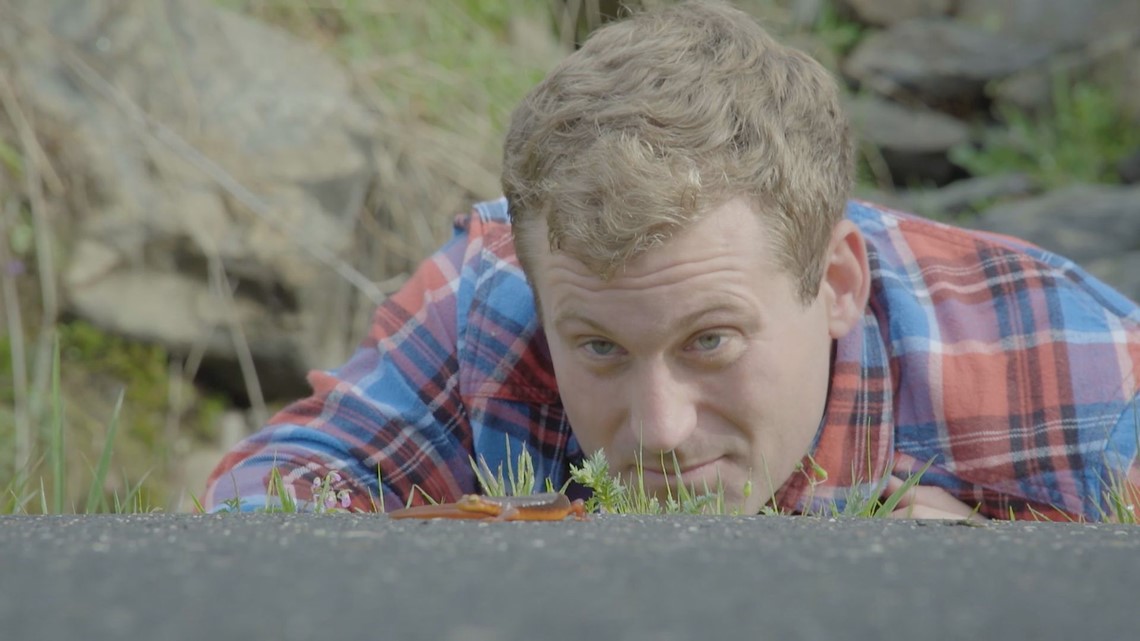A deadly love story is taking place right now at Yosemite National Park.
Its newt migration season and the slow-moving amphibians are trying to make it to their breeding grounds.
There is just one problem. A number of roads are in the way.
Roads are a problem both inside the national park and just outside the gates. The small town of El Portal sees lots of newt activity. This year, a migrating newt accidentally walked into Marci Messick’s elementary classroom. Her fourth grade class eventually adopted four other newts and made a temporary home for them in the class terrarium.
“I used it as an excuse to get the kids to study the newts,” Messick said.


Every year in the Yosemite National Park area, newts and other amphibians make their way out of the forest and into the Merced River to find a mate. Rob Grasso, Yosemite National Park Biologist, says the amphibians only come out when conditions are right.
“Usually between February and March and just after it rains,” Grasso said.
An easy spot to view the migration is on Incline Road, just outside the park.
“Unfortunately, we have a road in between their uplands," Grasso said. "The rock crevices where they are heading back to and where they breed in the river.”
This time of year, Incline Road is littered with dead Newts smashed by cars. Sadly, the newts must play a real-life game of Frogger before they can mate.
“Roads, globally for amphibians aside from disease and habitat loss, are probably the leading factors to their decline,” Grasso said.
The locals do their best to avoid driving over migrating amphibians, but the newts often come out at night and they are hard to see. Most make it across the road to mate. When they reach the Merced River, they are looking for a specific spot.


“They are looking for calm backwaters and roots or branches," Grasso said. "Areas where there is beaver activity make for good spots.”
Newts need roots or branches to attach their eggs to. They need calm water to latch onto a mate. Often, there are more male newts than females. In some cases, large mating balls form where several males grab onto the female. A slow-moving wrestle happens underwater, until the males latch onto the female.
“So, what the male will do is put his chin on the female’s head," Grasso said. "He has a hormone that will insight her to breed."
When breeding is done, newts will cross the road again and head up to the forest. Newts are resilient amphibians, live upwards of 15 years. The amphibians often share homes with animals. They live in animal burrows with non-threatening mammals. However, newts are toxic, many predators know not to eat them.
Grasso say the level of toxicity in newts is still a mystery, varying in species. He says it is ok to pick newts up, but it’s a good idea to wash your hands afterwards.
“Newts may provide benefits to some non-threatening animals," Grasso said. "They may live in their burrow, but in return, they provide a toxicity to deter predators away.”


Newt migration only lasts a few months. That means students in Mrs. Messick’s class have a brief time to study the amphibians. Part of her lesson is to release the newts that were kept in captivity.
“It’s a sad day," Messick said. "We all get attached to them, but the kids learn a lot by releasing them.”
The newt is a fascinating animal. Biologist still don’t know everything about them. Fortunately, Mrs. Messick is inspiring a new wave of potential newt biologists.
Follow the conversation with John Bartell on Facebook.

